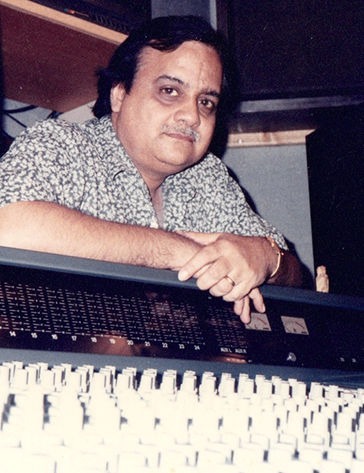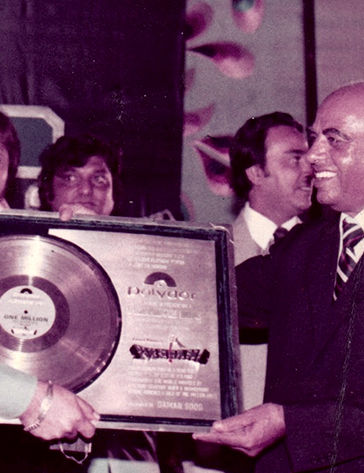After graduating from the Film & Television Institute of India in Pune with a Gold Medal for Sound Recording and Sound Engineering, Daman Sood was determined to stay at the top of his game. Throughout his career, he made regular trips to the UK, to ensure he always had his hands on the latest technology available, which arguably made him the go-to recording engineer in India. One thousand albums later, Sood tells his fascinating story...
Daman Sood’s first break was a four-year stint at Bombay Sound Services which began in 1969, where he worked under the late B.N.Sharma, who recorded film tracks for Madhumati, Mugle-a-Azam, Talash, and Bandini. During that time, most of the recording setups in India were optical, and Sood was well trained in working with the format.
“In India, everything was recorded live on one-track, 35mm mono, but at Bombay, we had an RCA three-track machine,” Sood explains. “We had a very basic mixer, with two auxes, but we managed to record some incredible pieces on that three-track, including an 80-piece orchestra. We’d have the orchestra on the floor, and artists in a separate iso booth, playing soft instruments like guitar, sitar, and banjo; one track was for the rhythm; one was for harmony and solos; and one was for the voice.”
That period of Sood’s life was a real learning experience, and from there, he developed a passion for recording. In June 1973, Sood established a recording studio for Western Outdoor Advtg. Pvt. Ltd. in Mumbai, where he worked as recording director. He started off recording radio and TV commercials, which he describes as “a completely different art”.
“I was responsible for fixing the booms, placing the mics and the musicians, and switching recorders on and off, basically.” he explains. “I had a good salary, and I was independent; the company started making these huge billboards like you’d see in Hollywood, with space for multiple adverts on them, so I was making a lot of commercials. I’ve done more than 1,000 radio and TV commercials in my life, which is pretty crazy, when you think about it!”
Switching to Digital
In the early ‘80s, Sood started working with Akai 12-track Hi8 machines with remote control, and a Mitsubishi X86 for mixing, “because CDs would soon be coming to India”; and by the mid-’90s, he had purchased a Studer A827 multitrack, and was getting heavily into recording songs for Bollywood.
“In the film world, the maximum was four-track, and since I had 12 tracks, people flocked to record with me. Since I had my Hi8 machines, and I was trained, I saw it as a good opportunity to introduce the technology to my country,” he says, proudly. “That same year, I got my first introduction to Genelec, and that really changed everything for me.”
Sood had previously been a Tannoy user, but quickly became a huge fan of Genelec’s 1031 monitors, after being offered a demo by a friend who was distributing for Dolby in India.
“The [Genelec] 1031s were the world standard at this stage, and I remember the first time I gave them a listen, they felt odd to me... I soon realised this is because they were so wonderfully neutral, and simply didn’t have that colouration that many of the other nearfields had at the time, so I had to have a pair. Out of the 1,000 albums I’ve recorded in my life, I would say 850 of them were done on those Genelec 1031s; it doesn’t matter what the genre of music is, they just feel right on any project.
“Even when tracking, I don’t want big monitors – I used to say to people, your ear is more or less linear, so you get absolutely all the spectrum and imagery at 85dB; and for me, that’s the optimum listening volume. Another thing is, I never get tired when using them over long periods. There’s no fatigue, which is amazing really, considering an engineer’s daily routine might be 12 hours of listening, with perhaps an hour or so break for lunch!”
How far then, has India come, over the years Sood has been in the business?
“When I retired from sound recording, I wanted to teach people what I’d learned on my travels, and I’m fortunate enough to be doing that today,” Sood says, with a hint of reflection. “A big move was of course mono to stereo, and then Bollywood changed many things; a Bollywood film without sound has no meaning, so that was a real turning point in my career. Another change is 5.1; today, it’s mandatory to have an HD channel with 5.1 audio transmission, whereas in 2002, it wasn’t even a concept. It’s amazing to have witnessed all these changes!”

